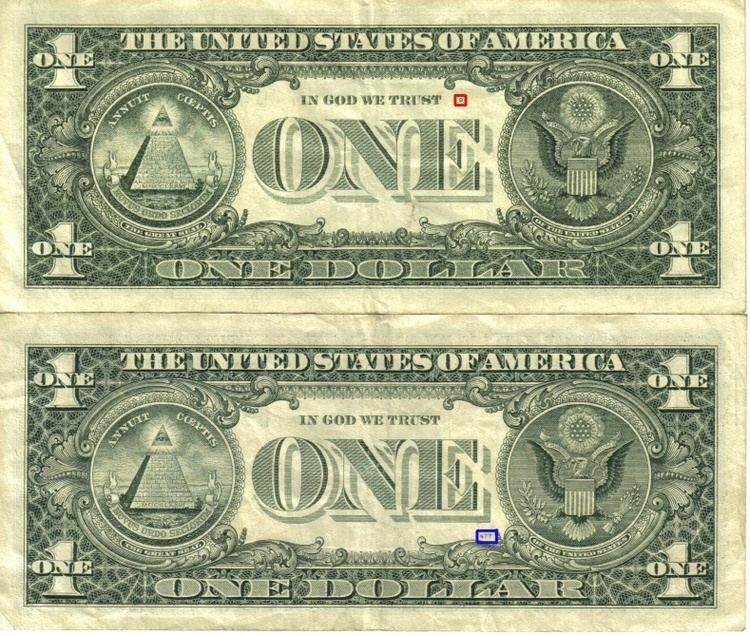Value 1 $ Nature of rarity Experimental press run | Years of printing 1992–1996 Estimated value US$2 – $1,300 | |
 | ||
Web notes are a type of United States currency named after the "web printing production" method of printing on continuous rolls of paper. There are several types of "web printing production" methods, including offset, gravure (intaglio), flexography, etc. However high-pressure web intaglio printing, front and back of the intaglio process, was a totally new idea.
Contents
- Intaglio web press versus intaglio sheetfed press
- Intaglio standard
- Web press experimental
- Key issues
- References
Between 1992 and 1996, the Bureau of Engraving and Printing experimented to see if a web press that used continuous rolls of paper was quicker and cheaper than intaglio printing, which used flat sheets. The affected notes are dollar bills from Series 1988A, Series 1993 and Series 1995. They are legal tender and are not considered error notes, although they are valuable due to their rarity.
The following is a list of web-printed notes:
1988A
1993
1995
Intaglio web press versus intaglio sheetfed press
In May 1991, the Bureau of Engraving and Printing (BEP) installed a web press at the Washington, DC printing facilities to test a new way of printing $1 bills. BEP officials hoped that the test would replace the sheet fed intaglio presses by switching to a possibly quicker and less expensive method of printing. Alexander-Hamilton Web Currency Press was a true web currency press.
There are several differences between the two types of presses:
Intaglio (standard)
Web press (experimental)
The continuous-roll printing process (Web offset) is visually very similar to the printing of newspapers, whereas intaglio visually resembles metal stamping manufacturing methods.
Problems arose with the web press. The main drawback was its inability to sustain long continuous runs compared to the standard (Giori) sheet fed method of intaglio printing, resulting in constant breakdown. In addition, the quality of the prints were subpar compared to the established method. Due to these factors, the web press was discontinued in July 1996.
Key issues
Of the series, Series 1988A bills hold the two key issues (issues with the most collector value).
Notes of the New York FRB and the Atlanta FRB are the two keys. FRBNY used the B-L serial number block, while FRBA used a Star Note serial number block (F-*), with the specific serial numbers in place of the dash. While an accurate print run has never been disclosed by the BEP (as the figures were combined with the intaglio runs), estimates are 1,920,000 notes for the B-L serial number block for the FRBNY, and 640,000 for the F-* serial number block for FRBA.
FRBNY B-L notes can fetch from $300 for circulated examples, to $1,300 for uncirculated examples. FRBA F-* notes can fetch from $600 for circulated examples, to $1250 for uncirculated examples.
